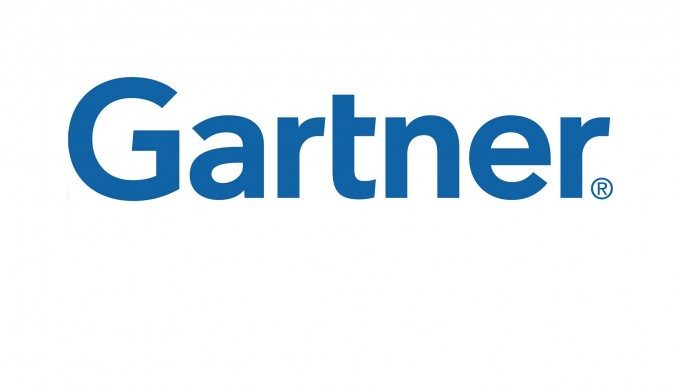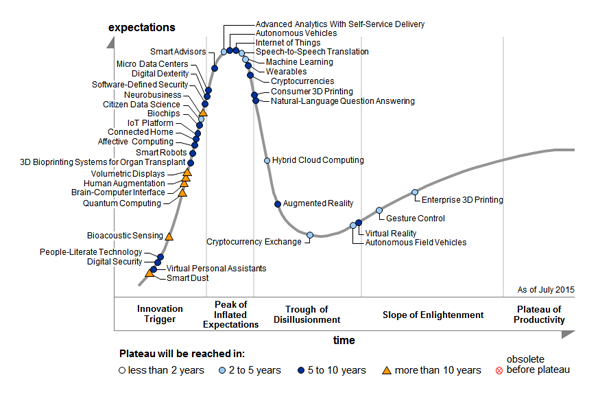 Brian Blau is the research director in the personal technologies group at Gartner specializing in mobile apps and video game software in the consumer domain. He’s also been analyzing the market for virtual and augmented reality for the past five years, but has been involved in VR since the 1980s. Gartner is a technology advisory service and so they’re in the business of predicting the future. A lot of their predictions and reports are not released to public, but Brian was able to hint at some previously made predictions as well as compare their analysis with some of the other analysts who have been estimating the overall market size for virtual and augmented reality.
Brian Blau is the research director in the personal technologies group at Gartner specializing in mobile apps and video game software in the consumer domain. He’s also been analyzing the market for virtual and augmented reality for the past five years, but has been involved in VR since the 1980s. Gartner is a technology advisory service and so they’re in the business of predicting the future. A lot of their predictions and reports are not released to public, but Brian was able to hint at some previously made predictions as well as compare their analysis with some of the other analysts who have been estimating the overall market size for virtual and augmented reality.
LISTEN TO THE VOICES OF VR PODCAST
Audio PlayerBrian is in the business of making predictions about the future, and so this was a really fascinating interview to get some insights about the significance of how VR and AR is going to change our relationship to technology and other people. The big point that he wanted to emphasize is that immersive computing represents an entirely new user interface and human interaction design that is way different than anything else that we’ve seen before.
He says that the transition into immersive computing is significantly more different than the transition from typing on a desktop computer to touching a smartphone or tablet. Also, this new immersive computer paradigm is going to change everything from how we interact with technology to how we interact with other people.
It was also fascinating to hear how some other emerging technologies are going to combine with VR and AR. He sees that virtual personal assistants, like we saw in the movie Her, are going to start assisting us on our daily tasks and perhaps start doing things on our behalf. Then when you combine a virtual personal assistant with computer vision technologies and the Internet of Things, then you start to create what they call “ambient experiences.” He expects that we’ll start to have rooms with sensors so that these artificial intelligent programs can help us with a lot of different things in our daily lives.
In terms of making some VR and AR market size analysis, Brian couldn’t share Garter’s latest predictions. However, he was able to provide some older predictions that have been made public as well as compare their predictions to some other analysts. About a year ago, Gartner predicted that there would be 25 million HMDs by 2018, but they’ve since updated their prediction to be more than that. Brian also said that there are other analysts who are saying that the VR market is going to be $100-200 billion within the next 4-5 years, but Brian says Gartner’s prediction is more conservative than that. He also says that the compound annual growth rate of the VR market is expected to be well over 100%, which indicates that VR will continue to be a high-growth market.
Gartner does a combination of top-down research in to the supply side and major HMD manufacturers, as well as bottom-up research by doing surveys to see what type of experiences that the market is going to be demanding using VR. They’ve been producing reports on the competitive landscape of the three major HMD manufacturers, but now they’re starting to report on some of the use cases ranging from training, prototyping, design, and beyond. What they’re seeing is that the demand for VR is pervasive, and that the media coverage for VR trending really high.
One of the things that Gartner invented was to the hype cycle journey of different distinct periods of hype and overblown expectations that new emerging technologies go through over the course of five to 20 years. After an initial “innovation trigger” period, then there’s a period of “peak of inflated expectations” that can be seen as the height of the hype cycle. The media goes crazy with a lot of hopes and dreams of the promise and potential of the new technology, and then reality often sets in and there’s a “trough of disillusionment”. It’s only after passing through that reality check period that technology starts to climb back up the “slope of enlightenment” and then into the “plateau of productivity.”
Brian maintains the virtual reality dot on this hype cycle graph, and he says that it’s just about to cross over from the “trough of disillusionment” and into the “slope of enlightenment.” VR has had a long history where the peak of inflated expectations probably hit in the early 90s when the promise of the potential of VR was about 20 years ahead of where the technology and ecosystem of content creators needed to be. From this perspective, then we can start to see a lot more pragmatic and practical applications of VR being talked about in the media as it’s slowly accelerating towards it’s plateau of productivity. VR has had a long journey relative to other technologies, and Brian says that they’ve artificially slowed down the normal 5-20 year hype cycle journey for VR to more accurately account for where it’s currently at.
It’s interesting to note that the augmented reality dot is lagging behind the virtual reality dot as it’s just starting to really enter in the bottom of the trough of disillusionment. Brian estimates that AR is at least a year behind where VR is at, and perhaps more.
Brian has also covered the evolution of cell phones and the smartphone market, and compares and contrasts what was happening there with how he expects the VR and AR markets to unfold. There’s a lot that is different with the infrastructure that was already in place with cell phones and Apple’s role as playing the market hero, but there’s also a lot of similar parallels in terms of the importance of a software and app ecosystem that differentiates the phones. He expects to see a VR and AR HMD battle and an ecosystem battle that will be continuing to evolve and play out.
Finally, Brian sees that we will have access to these wearable computing AR and VR devices that really match the human perceptual system for the next-level of immersion and how we experience each other through technology. Right now we have a pretty good sense of what’s real and what’s not real. And Brian says that AR and VR are going to blend that line, and it’s going to fool us. And we’re going to really love it.
Become a Patron! Support The Voices of VR Podcast Patreon
Theme music: “Fatality” by Tigoolio








